Over the years, a number of studies have shown that Protestants give more to their churches than Catholics do. For example, a national study in 2003 showed that Protestants give an average of 2.6% of their income to their church, while Catholics give an average of only 1.2%. A similar giving gap – both in the amount given and in the percentage of people who give – has been found in other studies as well.
A 2011 study by Notre Dame University examined factors that affect people’s level of giving to their churches. That report, “Unleashing Catholic Generosity: Explaining the Catholic Giving Gap in the United States,” identified four main factors related to giving.
- People’s level of church attendance and religious involvement have a clear effect on people’s contributions to their churches. Within each of the religious traditions considered by the study (for example, Catholic, Evangelical Protestant, Mainline Protestant), more frequent church attendance is associated with increased giving. Comparing people with similar church attendance, though, does not eliminate the Catholic-Protestant giving gap. Among weekly church attenders, the gap between Catholic givers and Protestant givers is actually larger than the gap among occasional church attenders.
- People’s level of spiritual engagement with money – the extent to which they see their use of money and possessions as being connected to their spiritual life – also has a clear effect on people’s contributions to their churches. This factor accounts for much of the Catholic-Protestant giving gap, because the Notre Dame study found that American Catholics are much more likely than Protestants to compartmentalize, to think that money and faith have little to do with one another. As a result, they tend to give less.
- A congregation’s culture around money can have a significant impact on the giving levels of the members of that congregation. The Notre Dame study distinguished between two distinct types of congregational culture related to money: “paying the bills” and “living the vision.” The second culture leads to increased giving – but the first culture is more common in Catholic parishes. Among Catholics, those who report that their parish focuses on need and scarcity when discussing money (“paying the bills”) make up a slightly larger percentage than those who report that their parish focuses on mission and spiritual growth when discussing money (“living the vision”). Among both Evangelical Protestants and Mainline Protestants, however, it is reversed. In fact, the percentage reporting a “living the vision” approach is more than twice as large as the percentage reporting a “paying the bills” approach.
(Note that the Notre Dame study was conducted in 2011. It would be great to have someone conduct a new study, because it would be interesting to see if the many efforts to build a stewardship mindset in Catholic parishes are moving the needle at all, both in terms of the “living the vision” culture within parishes and the level of spiritual engagement with money among individual Catholics.)
- Finally, a fourth factor with a notable effect on people’s giving is the congregation’s level of communication about vision and mission, along with the individual members’ sense of connection with, involvement in, and “ownership” of that vision and mission. For example, people who strongly agreed with the statement “My congregation does an excellent job at communicating its overall mission and priorities to its members” gave to their congregations at a much higher rate. However, only 18% of Catholics in the study strongly agreed with the statement, while 32% of Mainline Protestants and 49% of Evangelical Protestants strongly agreed. Similarly, people who strongly agreed with the statement “I personally feel part of the planning of the vision and mission of my congregation” gave at a much higher rate. Again, Protestants responded to this question more positively: 16% of Mainline Protestants and 25% of Evangelical Protestants strongly agreed, while only 6% of Catholics strongly agreed.
This last factor has clear implications for parish planning. A planning process that intentionally and meaningfully engages a large number of parishioners will lead to increased support of the parish’s goals and direction, both in terms of parishioner volunteering and parishioner financial contributions. A planning process that includes regular communication about mission and vision will also strengthen parish support.
Meitler’s approach to parish planning has always emphasized broad collaboration and mission-focused communication, because we believe that this approach results both in better planning and in more successful implementation. How can we help you to advance your mission?

 We were treating faith as a set of building blocks (which we had, and most of the faculty and staff didn’t). If we just gave each of them the building blocks of our course offerings, then the pieces would add up to faith.
We were treating faith as a set of building blocks (which we had, and most of the faculty and staff didn’t). If we just gave each of them the building blocks of our course offerings, then the pieces would add up to faith. Around that same time, I was reading Our Hearts Were Burning Within Us, and reflecting on passages like this: “Faith is living and active, sharing many of the qualities of living things: it grows and develops over time; it learns from experience. … Adults need to question, probe, and critically reflect on the meaning of God's revelation in their unique lives in order to grow closer to God.”
Around that same time, I was reading Our Hearts Were Burning Within Us, and reflecting on passages like this: “Faith is living and active, sharing many of the qualities of living things: it grows and develops over time; it learns from experience. … Adults need to question, probe, and critically reflect on the meaning of God's revelation in their unique lives in order to grow closer to God.”
